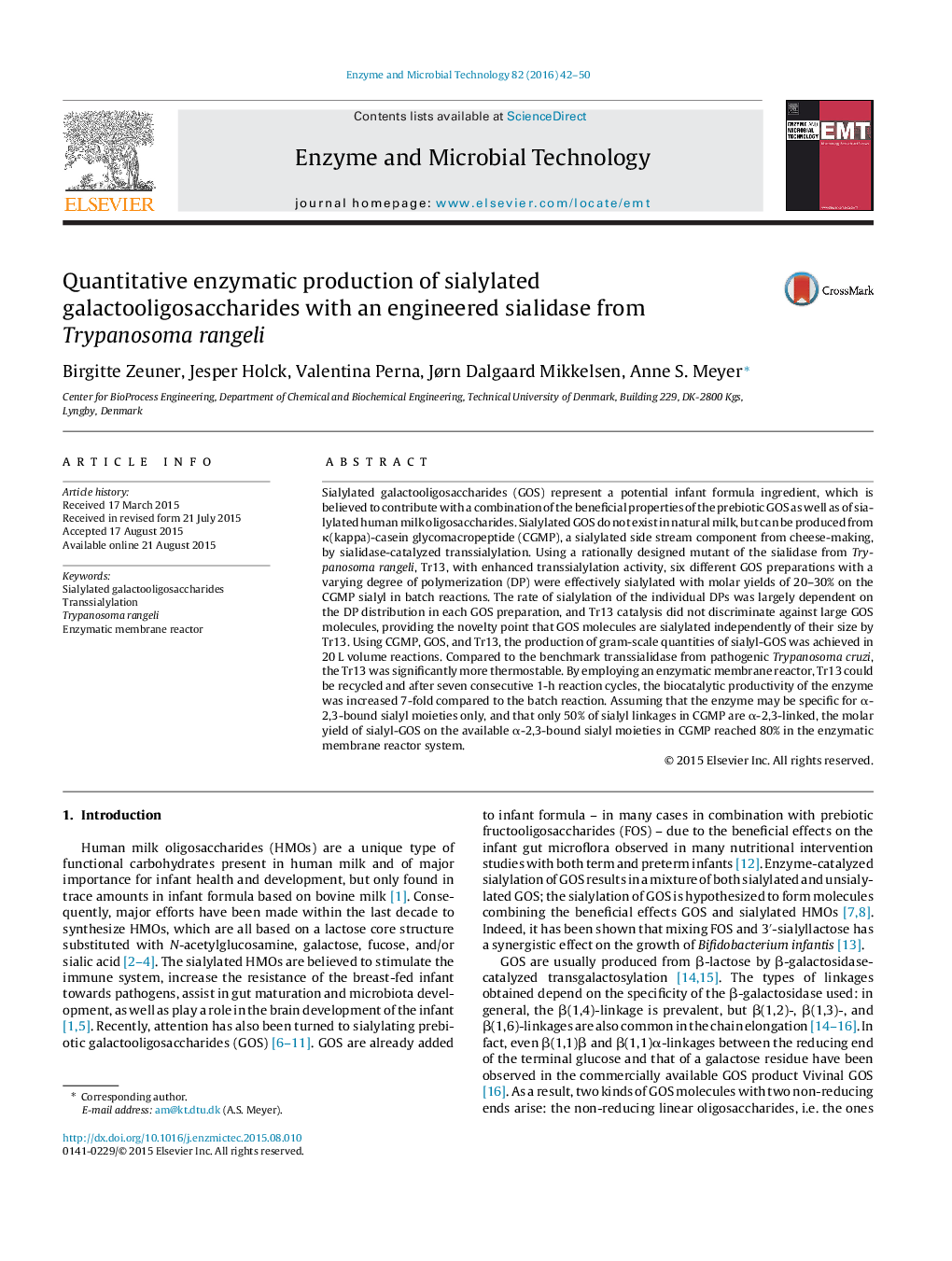| کد مقاله | کد نشریه | سال انتشار | مقاله انگلیسی | نسخه تمام متن |
|---|---|---|---|---|
| 16894 | 42621 | 2016 | 9 صفحه PDF | دانلود رایگان |

• Enzymatic sialylation of six different commercial galactooligosaccharide preparations.
• Gram-scale sialylated galactooligosaccharide production achieved.
• No sialylation acceptor discrimination with respect to galactooligosaccharide chain length.
• Enzyme recycling in a membrane reactor produced 7-fold increase in biocatalytic productivity.
• T. rangeli sialidase enzyme mutant significantly more thermostable than Trypanosoma cruzi trans-sialidase.
Sialylated galactooligosaccharides (GOS) represent a potential infant formula ingredient, which is believed to contribute with a combination of the beneficial properties of the prebiotic GOS as well as of sialylated human milk oligosaccharides. Sialylated GOS do not exist in natural milk, but can be produced from κ(kappa)-casein glycomacropeptide (CGMP), a sialylated side stream component from cheese-making, by sialidase-catalyzed transsialylation. Using a rationally designed mutant of the sialidase from Trypanosoma rangeli, Tr13, with enhanced transsialylation activity, six different GOS preparations with a varying degree of polymerization (DP) were effectively sialylated with molar yields of 20–30% on the CGMP sialyl in batch reactions. The rate of sialylation of the individual DPs was largely dependent on the DP distribution in each GOS preparation, and Tr13 catalysis did not discriminate against large GOS molecules, providing the novelty point that GOS molecules are sialylated independently of their size by Tr13. Using CGMP, GOS, and Tr13, the production of gram-scale quantities of sialyl-GOS was achieved in 20 L volume reactions. Compared to the benchmark transsialidase from pathogenic Trypanosoma cruzi, the Tr13 was significantly more thermostable. By employing an enzymatic membrane reactor, Tr13 could be recycled and after seven consecutive 1-h reaction cycles, the biocatalytic productivity of the enzyme was increased 7-fold compared to the batch reaction. Assuming that the enzyme may be specific for α-2,3-bound sialyl moieties only, and that only 50% of sialyl linkages in CGMP are α-2,3-linked, the molar yield of sialyl-GOS on the available α-2,3-bound sialyl moieties in CGMP reached 80% in the enzymatic membrane reactor system.
Journal: Enzyme and Microbial Technology - Volume 82, January 2016, Pages 42–50